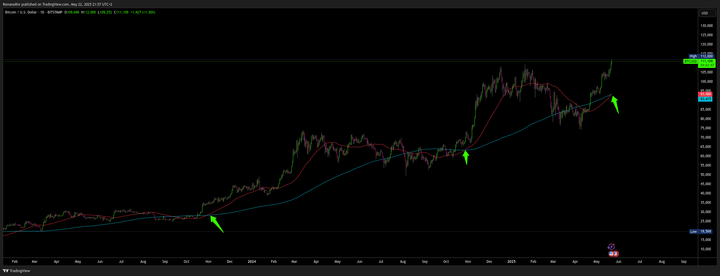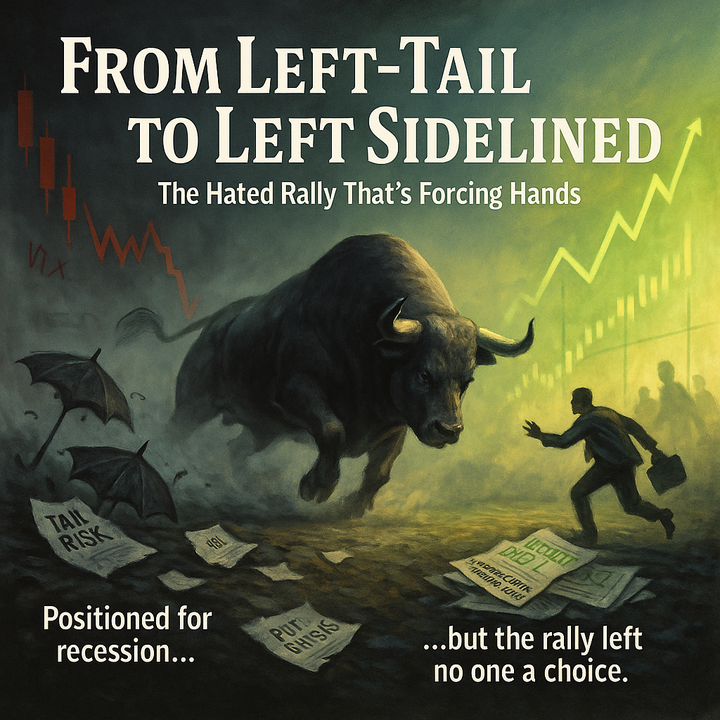Market Research & newsletter - March 12, 2023

Silicon Valley Bank collapsed, and many wondered how this disaster could have happened. We would expect that the "smart money" uses cutting-edge systems and algorithms to minimize its risk. After all, Silicon Valley Bank was close to the epicenter of tech innovation.
I mean, after all, Silicon Valley Bank had that "forward-thinking" mentality, right?
Despite the expectations having nothing to do with tech failures or a misstep in exotic investment (like Alameda Research), it was a simple matter of the old-fashioned interest rate risk.
Okay, time for a oversimplified explanation
You see, banks are in the business of accepting deposits and making loans. If the number of deposits exceeds the number of loans (as with Silicon Valley Bank), the excess deposits are stored in the form of bonds or other bond-like instruments such as mortgage-backed securities.
Banks are then exposed to "interest rate risk," meaning bond prices fall when interest rates rise—in this case, causing a decline in the value of Silicon Valley Bank's assets.
When these bonds lost their value, the bank could not cover its outstanding liabilities, leading to its eventual collapse. Silicon Valley Bank was a victim of basic economic concepts.
Okay, now we've got the oversimplified explanation out of the way. Let's dive deeper. This is, after all, an important event. I write for educational purpose after all, not just covering news
There's an NFT airdrop at the end of the article on Optimism. Scroll down for the instruction video.
Tip: Use the play button to listen to the article instead of reading!
Interconnected Relationship between bank assets, liabilities, interest rates & bonds
The relationship between bank assets, liabilities, interest rates, and bond values is complex but intricately linked.
When a customer makes a deposit, the bank owes them the deposited money. Deposits are liabilities for the bank.
The bank is responsible until the money is taken out or lent. Bank liabilities are loans and debts a bank has given out, like mortgage loans and credit cards.
When it comes to interest rates and bond values, as interest rates go up, so too does the coupon rate associated with the bonds.
Investors receive an annual payment or coupon that's usually paid semi-annually from the issues. The coupon rate can be thought of as the interest rate an investor will receive when investing in a bond. When investing in bonds, investors essentially lend money to the bond issuer.
The coupon rate is a percentage of the bond's par value and is set when the bond is issued. So investors are guaranteed to receive the coupon rate for the entire duration of the bond's life.
As the coupon rate increases, the bond's market value decreases.
That's because coupon/price = yield
As the denominator (price) decreases, the yield increases.
The Federal Reserve kept hiking interest rates, and this was a disaster for Silicon Valley Bank. The bank invested a lot of customer deposits in bonds with longer maturities.
So when interest rates went up, their bonds were more sensitive movements, and the market value of these bonds fell. Shit hit the fan quickly when the parent company of Silicon Valley Bank sought to raise more capital to plug the hole in its balance sheet.
The market saw this as a sign of weakness (hoes exposed). They seemed weak, a cue for depositors to withdraw their funds as quickly as possible. This sparked a genuine bank run.
Gotta love the bank run, bringing people closer together :)
This situation highlights the importance of understanding the relationship between bank assets, liabilities, interest rates, and bond values. Banks must be cautious when interest rates are rising.
If Silicon Valley Bank had invested in bonds with shorter maturities, the effect of a sudden rise in interest rates could have been mitigated. That's because bonds with shorter maturities are less sensitive to interest rate movements. Meaning the price of those bonds would have been less affected.
But bonds with longer maturities usually offer higher yields than those with shorter maturities. Bonds with longer maturities are riskier investments, meaning investors demand higher returns for taking on greater associated risks.
So, in the end, Silicon Valley Bank was on a noble quest for yield, which ruined them.
I know what you're thinking right now.....

If you're enjoying this newsletter, consider signing up for a premium subscription, a discord discussion server will be launched soon as an extra for premium subscribers.
Federal Reserve to the rescue: Treasury & FDIC Bank Term Funding Program
It's all so tiresome, but... here we go again.
In response to the failure of Silicon Valley Bank and the potential of further damage to the US banking systems, the Federal Reserve, Treasury, and FDIC announced a new sort of "bailout package" (from the looks of it, correct me if I'm wrong).
This includes the Bank Term Funding Program (BTFP), which provides loans to eligible depository institutions using US Treasuries, agency debt, mortgage-backed securities other qualifying assets as collateral.
The Department of the Treasury has committed up to $25 billion to backstop.
The FDIC insures people's money into Signature Bank and Silicon Valley Bank so that this program will protect their money. However, shareholders and certain unsecured debtholders, however won't be protected.
The BTFP might have an impact on the US equity markets. With access to additional liquidity, BTFP and other depository institutions may have more resources available to invest in the markets.
I'm not sure yet how this can impact the US dollar (as I'm writing this article at 4 am right now), but there might be an increased demand for US dollars again. I'm not sure, and I need some sleep and further reading.
BTFP can affect the Federal Reserve's plan to hike interest rates further.
I'm not sure, but BTFP loans, provided at a lower interest rate, could lead to lower borrowing costs for banks and other depository institutions. Also, the collapse happened because the Federal Reserve decided to hike rates so aggressively (I was expecting something to break or a credit event)
It's worth asking: $25 billion backstop for $18 trillion deposits?
Small meme
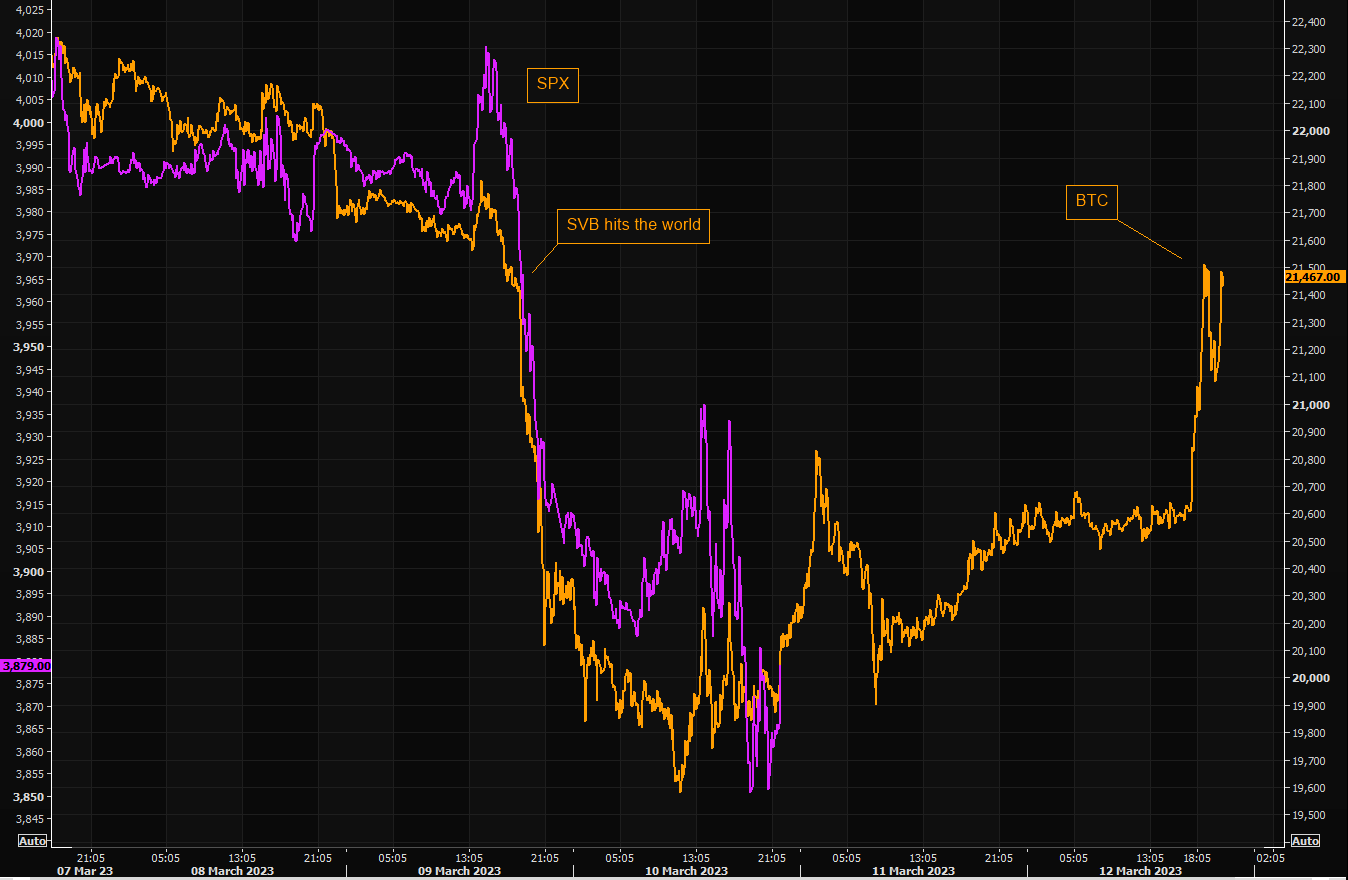
The newsletter doesn't end here; you can scroll down for more reading. However, consider a premium subscription if you enjoy the reading and find some value in it.
Newsletter Premium Subscription

Premium subscription
Tired of seeing low-effort content on Twitter with random people posting lines on a chart?
Maybe subscribing to this newsletter is something for you to gain an edge over the market.
Also, read my free medium articles: https://medium.com/@romanornr/
Full access to exclusive premium content
Subscribe, and get a competitive edge over the market.
Take the first step to kick your wife's boyfriend out of the house & stop getting liquidated.
This week ahead
Monday, March 13
- Unsure for now, but 3-4 days ago, there were no major economic data releases scheduled.
Tuesday, March 14
- NFIB Small Business Optimism Index
- Consumer Price Index (Monthly Change).
- Core Consumer Price Index (Monthly Change)
- Consumer Price Index (Year-over-Year Change)
- Core Consumer Price Index (Year-over-Year Change)
- Fed Governor Bowman speaks: a speech on innovation in the
- US banking system at an event in Honolulu hosted by the Independent Community Bankers of America association.
Wednesday, March 15
- Empire State Manufacturing Survey
- Producer Price Index - Final Demand
- Producer Price Index - Excluding Food and Energy
- Producer Price Index - Excluding Food, Energy, and Trade
Retail Sales - Retail Sales - Excluding Automobiles
- Retail Sales - Excluding Automobiles & Gas
- Core Retail Sales
- Business Inventories
- National Association of Home Builders Housing Market Index
Thursday, March 16
- Housing starts
- Building permits
- Import price index
- Initial jobless claims, week ended March 11
- Continuing jobless claims, week ended March 4
- Philadelphia Fed manufacturing index
Friday, March 17
- Industrial production
- Manufacturing production
- University of Michigan consumer sentiment
- University of Michigan 5-10-year inflation expectations
Forecast Inflation by Goldman
Goldman Sachs forecast a 0.45% increase in February's core Consumer Price Index (CPI) on a month-over-month basis, keeping the year-on-year rate unchanged at 5.6%.
This is mainly due to an 8% jump in airfares and an increase in car insurance costs. Used car prices are expected to rise slightly (+0.5%), while new car prices will likely decline (-0.2%) with renewed incentives.
Shelter inflation is expected to slow down slightly, with rent increasing by 0.62% and Owner-Equivalent Rent (OER) increasing by 0.59%
In addition, the headline CPI is expected to rise by 0.40%, reflecting stable energy prices and higher food prices.
There will be more newsletters upcoming this week ! It's a lot of material & news to cover within 1 night.
Btw, If you're looking into trying to trade Forex, US equities markets, commodities, and CFDs. You should check out PrimeXBT.
PrimeXBT is a crypto-based platform that enables traders to access multiple assets and markets, including cryptocurrencies, stocks, commodities, CFDs, and forex.
PrimeXBT is an online broker that allows traders to trade with leveraged trading, offering up to 1:1000.
With PrimeXBT, traders can open and close positions quickly.
The minimum deposit is about $10, and no KYC is required. PrimeXBT users can buy Bitcoin, USDT, and USDC using a credit card in the client dashboard.
I have been using PrimeXBT to test out as I've been looking for a broker to trade the SPX500, Forex, and commodities.
Here is my advice, as I've been testing. I prefer not to use Bitcoin as my collateral but instead USDT or USDC.
As bitcoin can be volatile and correlated, your collateral can go down as bitcoin goes down, so risky business. That's why I prefer using stablecoins as collateral.
Make sure to fund either the USDT or USDC instead of margin BTC.
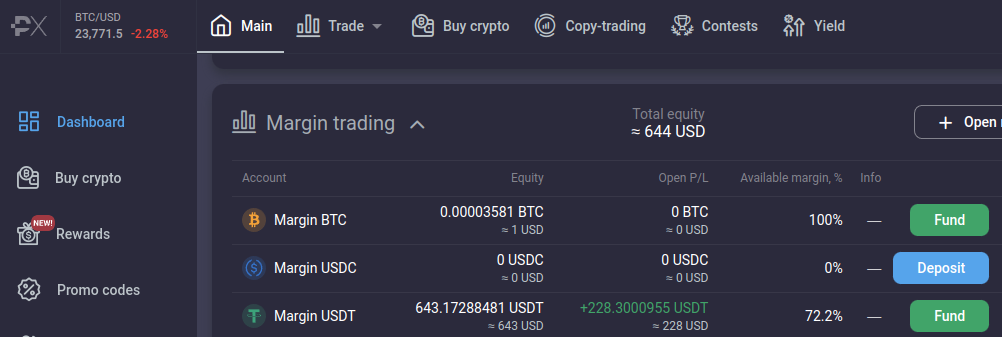
When you're using stablecoins as collateral, it's easier to place a stoploss and see how much you will be losing. This might be slightly off due to spread etc.
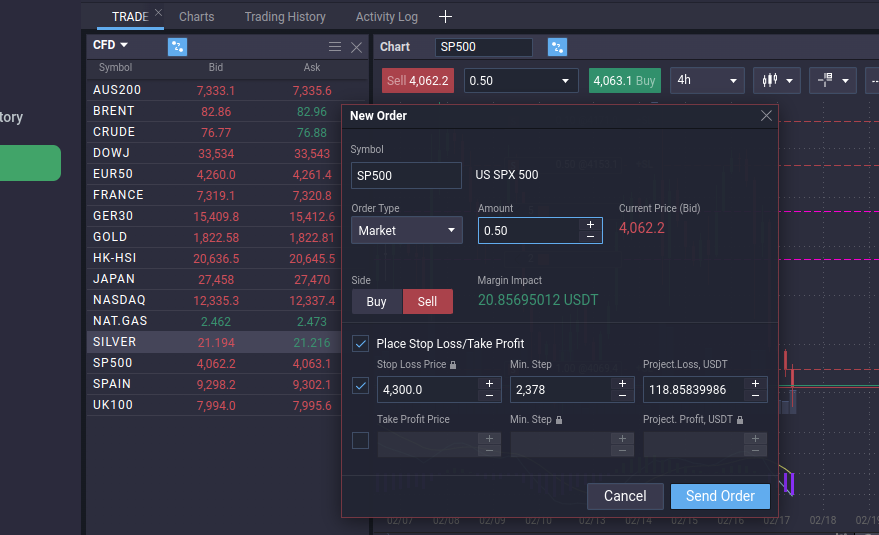
When having a position open, it looks like this.
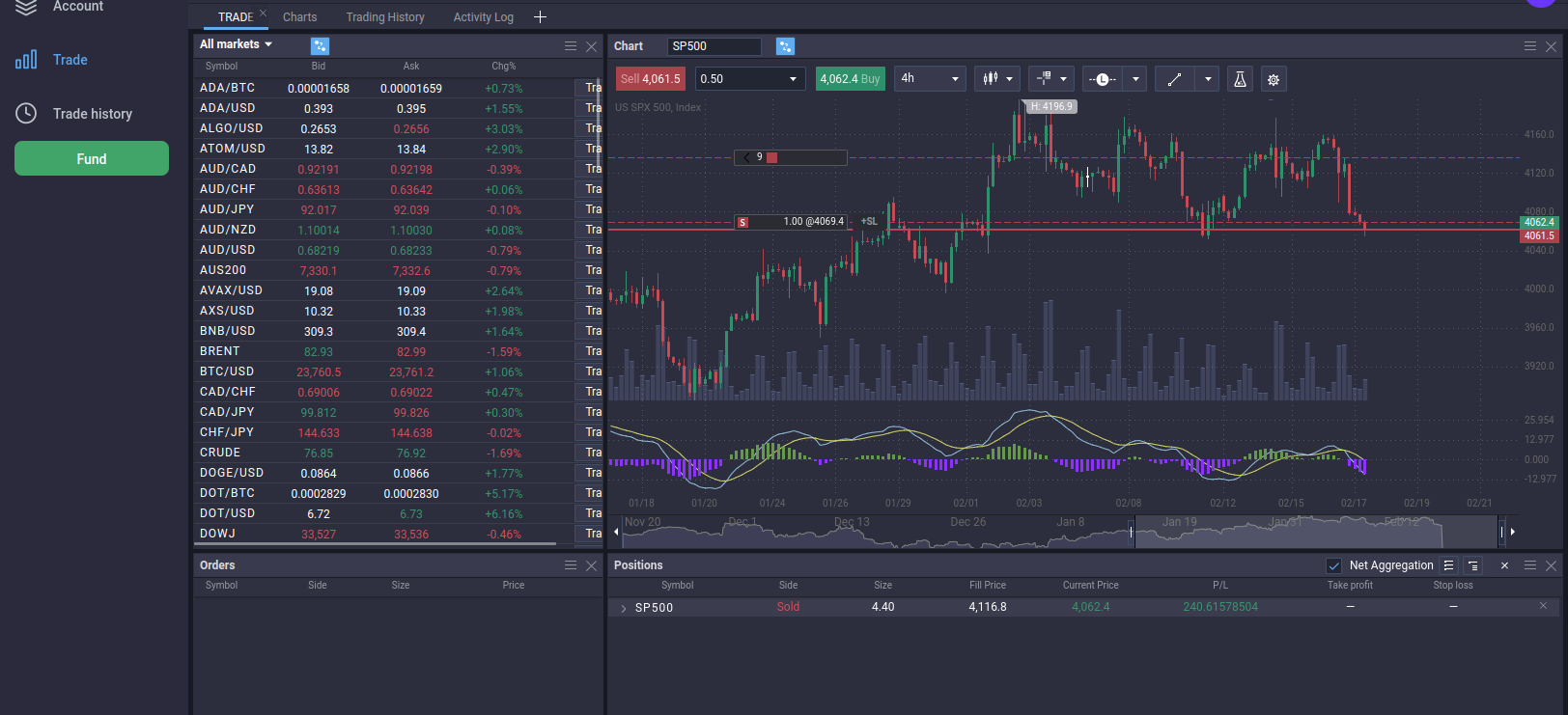
I used multiple orders over a few days, and you can close each trade if you like by pressing the "x" button.

So if you've been following my newsletter for a while, you know I cover legacy markets, options, cryptocurrency, Forex, commodities, etc.
Many of you haven't been able to profit due to not having access to trading stocks/CFDs/commodities.
I suggest trying out PrimeXBT; I have heard about positive experiences with PrimeXBT from other traders.

My referral link for PrimeXBT: https://u.primexbt.com/rnr
Depending on the deposit amount, you can receive up to a $7000 bonus when registering with my referral link. Note that's the maximum bonus.
Promo code: rnr
I recommend creating an account and playing with $300 - $500 or an amount you don't care too much about to practice first.
Don't take it too seriously, as you're just practicing. It's important to also look at legacy markets since everything is connected.
Gtrade
I've noticed this interesting DEX. So gTrade has a friendly UI but also has forex and stocks. I am still playing with the DEX. I recommend using the Polygon network to trade on the.
It's a decentralized alternative to PrimeXBT. The difference here is that you can trade decentralized using Polygon & Arbitrum.
There's no SPX500 to trade, but you can trade SPY, also stocks such as Google, Tesla, etc
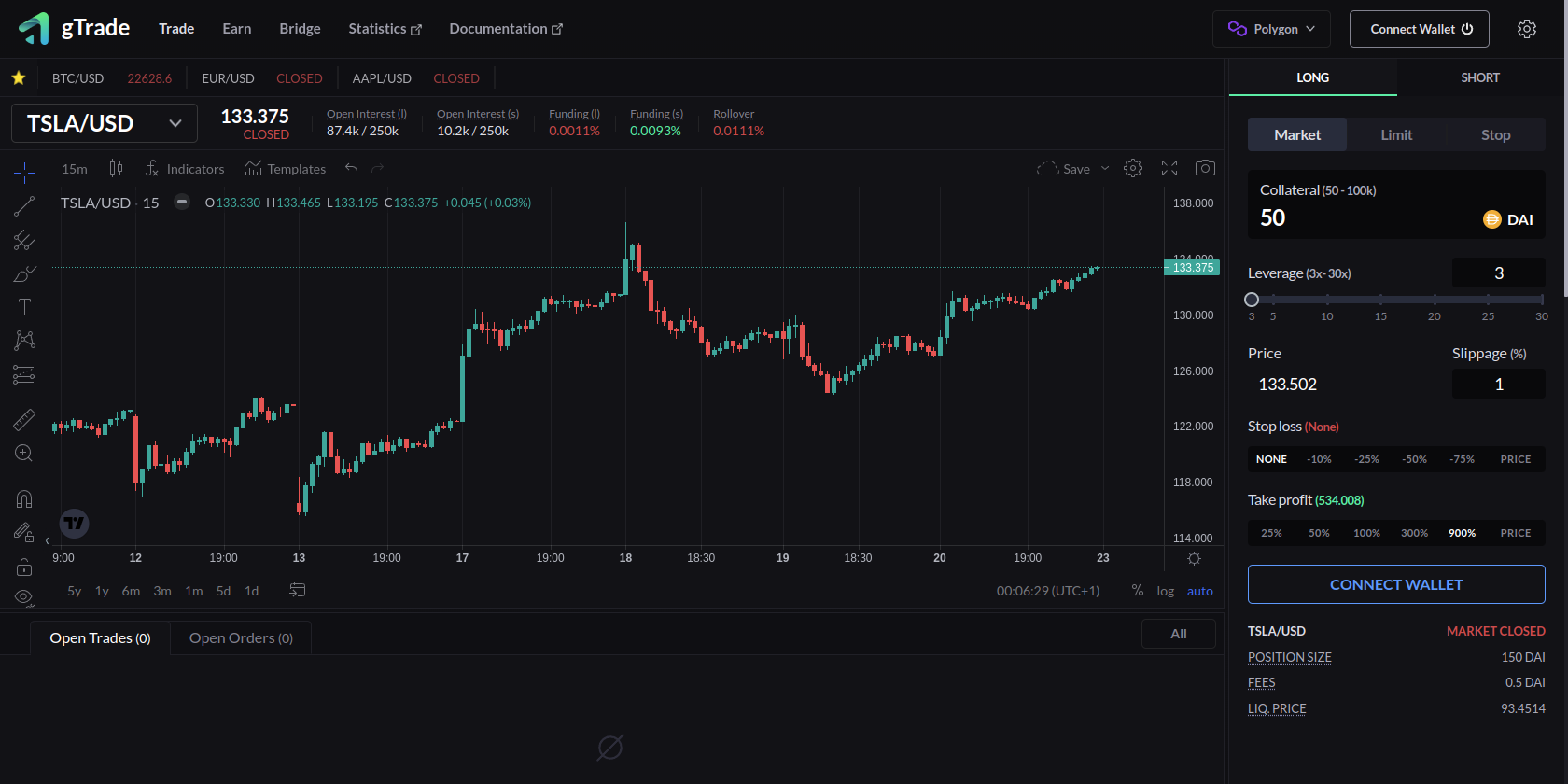

Again, switching from network and bridging is easy with Blockwallet
link: gains.trade/referred?by=romano
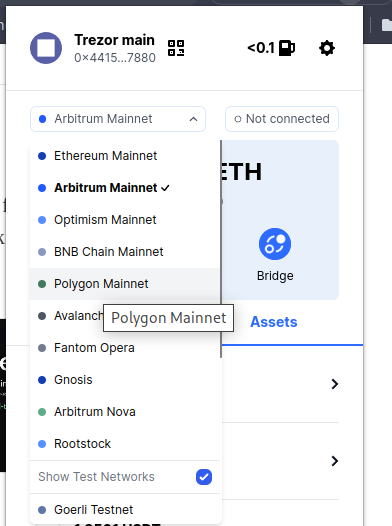
If you like trading on chain, go for Gtrade, but if you prefer a centralized exchange, choose PrimeXBT.
I would recommend practicing on PrimeXBT since there are no TX fees, and you can play with small amounts since there are no gas fees, etc.
On Gtrade, however, your leveraged trades are isolated. That's a huge benefit! If a bank intervenes, at least not, your entire account will be blown up when the price goes against you overnight or gaps up/down.
Blockwallet
I've been recommending Blockwallet in several tweets.
I made the switch from Metamask to Blockwallet.
The user interface and functions are much better; it works better with my Trezor and switching between accounts. Extra privacy, flash bot protection & anti-phishing. You can also import your Metamask seed, etc.
However, I've seen one of their latest tweets, BlockWallet has a token called "BLANK"
Kicking off the new year with some heat - the $BLANK token burn 🔥 pic.twitter.com/rm83xOo0wt
— BlockWallet 🔲 (@GetBlockWallet) January 16, 2023
If I were a betting man, which I am. I will assume that Blockwallet users are eligible for a nice airdrop. I would recommend installing Blockwallet and making some transactions.
You can export your Metamask seed and import it into Blockwallet. As some people think, there's no need to reshuffle your assets. Some people don't want to switch because Blockwallet has no mobile app right now. It doesn't matter. You can install Metamask or 1inch wallet on your phone and import your seed on your mobile wallet, which is not Blockwallet.

Chrome extension link: https://chrome.google.com/webstore/detail/blockwallet/bop
Apex Dex by ByBit
Reminder Apex incentive program, which pays you to trade and keep tour trade open, is ongoing.
They pay rewards to keep that position open lmao
— Romano (@RNR_0) January 12, 2023
Grand idea (however, maybe it won't work)
Use 1 wallet to long x amount
Use 1 wallet to short same amount
Farm rewards neutral?
Discount ref link code: https://t.co/JsJlHH5k3s
Ref code = 46
disclaimer: I hold 1 ApeX OG NFT pic.twitter.com/SgtbrREWS6
Think I can close it for a moment now
— Romano (@RNR_0) January 16, 2023
I like trading on Apex. I get rewards in BANA tokens as a reward
Basically, 1/3 position size as a reward/incentive to trade@OfficialApeXdex is a DEX from ByBit
Interface identical
Can recommend trying out https://t.co/JsJlHH5RT0 pic.twitter.com/Le0Y0y8X9d
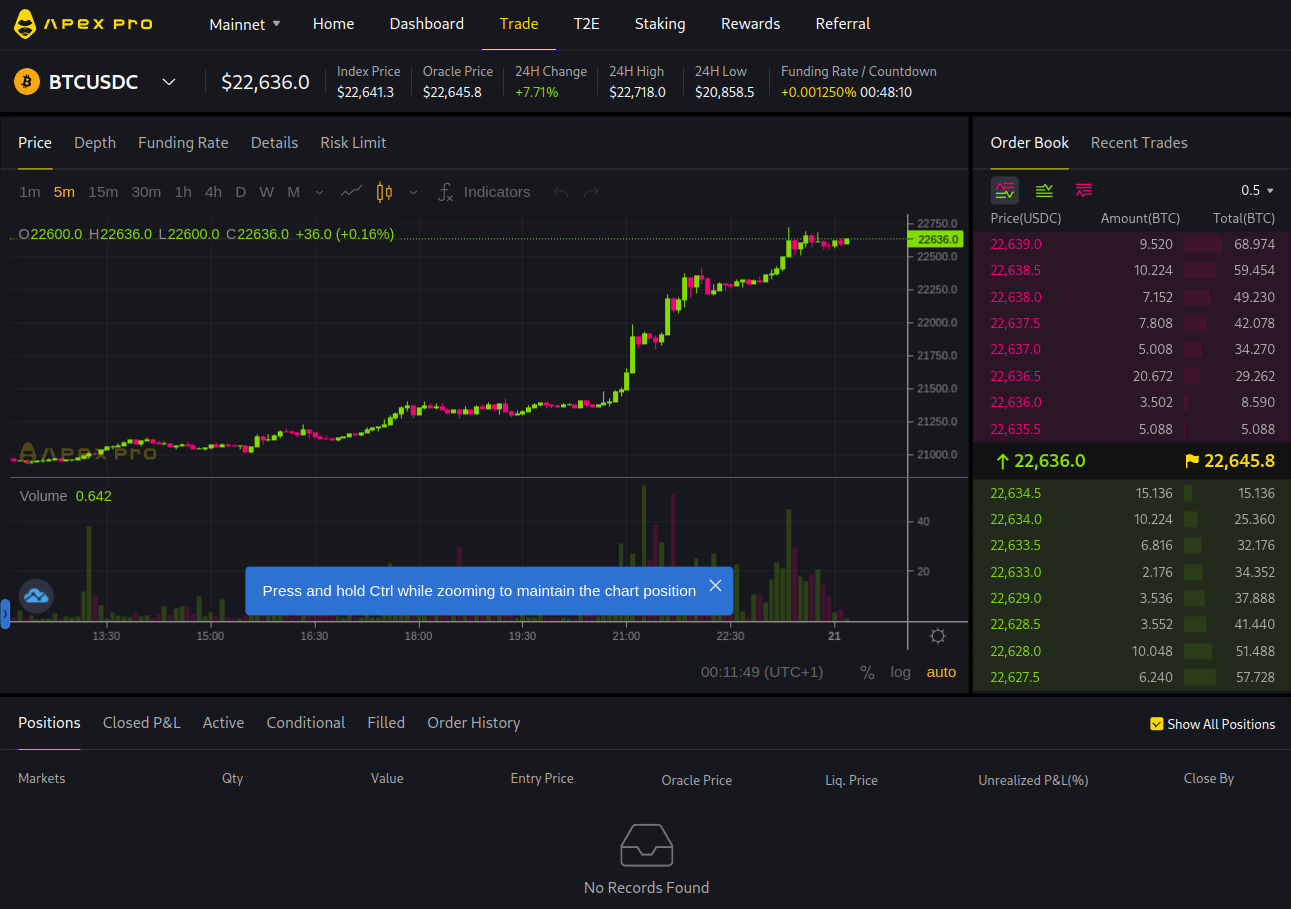
If you need a referral link: https://pro.apex.exchange/trade/BTC-USDC/register?affiliate_id=46&group_id=83
My referral code is: 46
In my opinion, this is the best DEX for trading bitcoin futures.
They also have a mobile app, Android:
Also, an app for iPhone

Ref code = 46
ByBit Deposit blast-off up to $30k
Sign up to Bybit with my referral link: https://partner.bybit.com/b/PA0ON66G6776
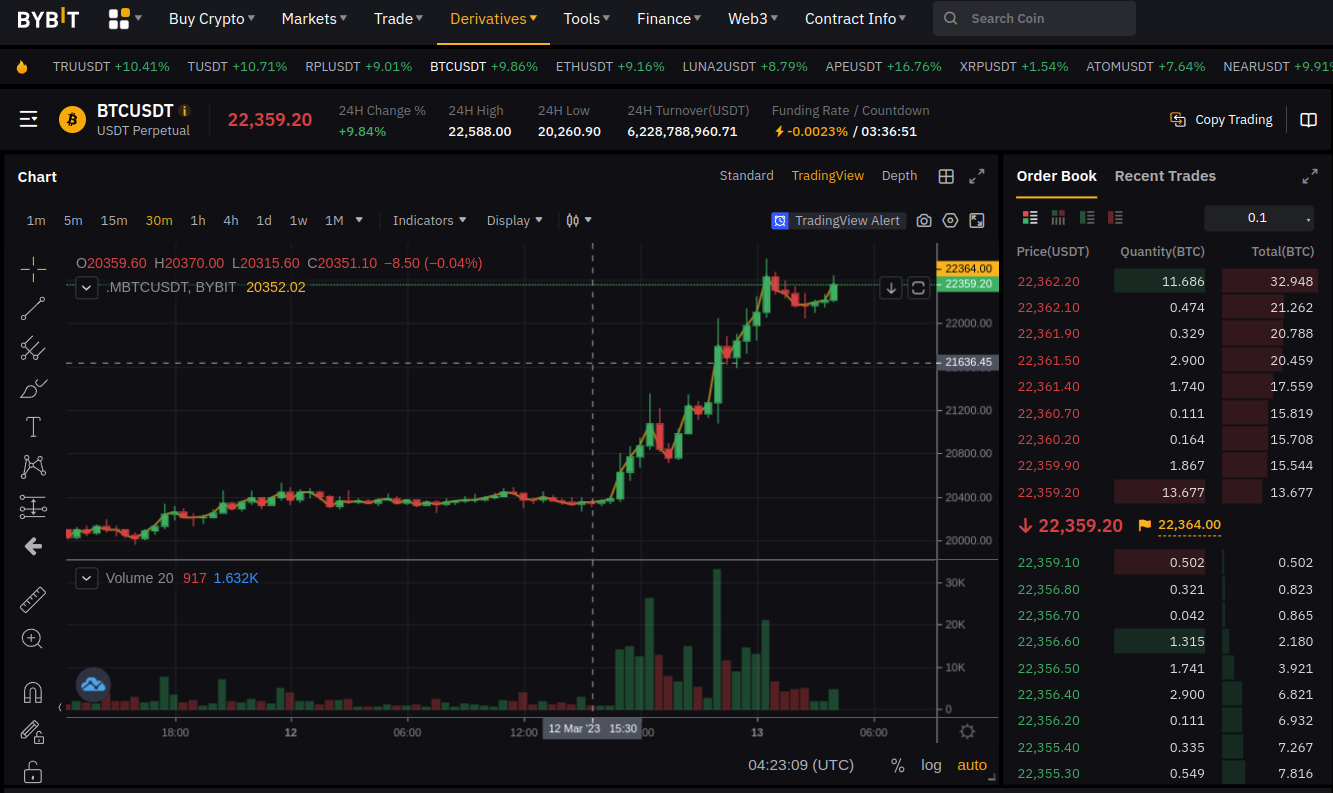
NFT airdrop
Backed is a decentralized NFT lending platform designed to empower users in the DeFi space.
It allows users to utilize the NFT ecosystem and leverage their existing tokens in the process.
Users can mint their own soulbound (non-transferable) NFTs that reflect their activity on the Optimism platform through the platform.
In addition, Backed also provides users with some tokens if they are among the owners of NFTs with the most features.
This token reward is meant to encourage users to increase their activity on the platform.
To bridge your ETH to Optimism, I used https://synapseprotocol.com/
Visit https://www.withbacked.xyz/community
Become an affiliate of this newsletter.
Receive 50% of the recurring commission every month
You get a revenue split, which seems fair to me, as compensation for promoting/sharing the newsletter with others.
Payouts can be in crypto or through a bank.

Newsletter affiliate
Receive 50% of the recurring commission every month
Basically, you get a revenue split, which seems fair to me as compensation for promoting/sharing the newsletter with others.

